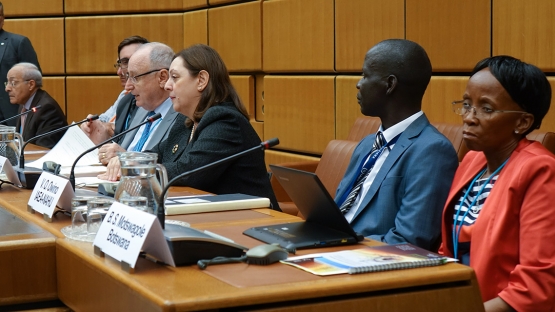Every year, 13 million people die from infectious diseases such as tuberculosis, malaria and HIV/AIDS around the world. The overwhelming majority of these deaths occur in developing countries and early detection is key to mitigate the spread of infection and the outbreak of epidemics. During an event held on the margins of the 62nd IAEA General Conference today, experts reviewed the role of nuclear medicine in the diagnosis of infectious diseases and the ways in which the IAEA can support Member States in building capacities to diagnose these diseases. The event also covered the role of stable isotope techniques in understanding the link between nutrition and infectious diseases.
“Infectious diseases that had been decreasing in incidence are re-emerging as a significant threat world-wide, especially in view of resistance to treatment. In addition, inadequate nutrition can also render the population more susceptible to certain infections” said May Abdel-Wahab, Director of the IAEA’s Division of Human Health. “Nuclear techniques can be used to improve accuracy and provide solutions to these diagnostic challenges.”
Increased resistance to antibiotics, a rise in international travel and growing populations in urban areas are creating new challenges to the management of infectious diseases. Since these diseases are no longer considered to be endemic, many countries do not have the radiopharmaceuticals necessary to accurately diagnose infections early.
Developments such as the emergence of drug-resistant tuberculosis, the reappearance of tuberculosis in countries which generally consider the disease to be under control, as well as the fact that it is spreading in some of Asia’s crowded metropolises, require international cooperation in addressing these public health concerns, panellists agreed.
The experts pointed out that when using conventional screening methods, some infections may not be discernible in their earlier stages and may even be mistaken for other diseases, including different cancers. Nuclear technologies enable detection before the appearance of symptoms in individuals, increasing the chances of physicians to control the spread of disease. “Molecular imaging has a unique role in detecting changes related to infection. The IAEA supports Member States in the proper use of imaging and radiopharmaceuticals to diagnose and monitor infections and response to prescribed treatments,” Abdel-Wahab said.
Radionuclide imaging is becoming a more important diagnostic tool for physicians, said Helmut Sinzinger, Professor at the Sigmund Freud University in Vienna. “This is thanks to more accurate visualizations of infection sites.” Sinzinger also highlighted the importance of choosing the appropriate radiopharmaceuticals for diagnosing different diseases.







